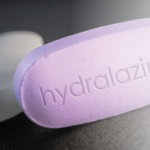Looking for Markers
Providers who care for patients with ANCA-associated vasculitis can appreciate the continued challenges of managing this disease, Dr. Wu says. One such challenge is the toxicity associated with long-term steroid use and other immunosuppressive therapies.
“We are looking for a marker, or panel of markers, to assess how active the disease is, its response to treatment, when the patient is about to relapse or when the disease is quiet enough to take the patient off treatment. We’re hoping to learn whether complement activation can be one of those markers,” Dr. Wu says. “Our results further substantiate the contribution of complement activation in ANCA-associated vasculitis, although the clinical implications are as yet uncertain.”
Could measures of complement activation predict who will relapse soon or experience complete remission? “And could complement activation be a possible target for therapy?” she asks
‘Our results further substantiate the contribution of complement activation in ANCA-associated vasculitis, although the clinical implications are as yet uncertain.’ —Dr. Wu
Peter Heeringa, PhD, professor in the Department of Pathology and Medical Biology, Vasculitis Expertise Center, University Medical Center, Groningen, The Netherlands, and a leading researcher in this field, notes that data from experimental animal models and from histopathological, serological and in vitro studies on human material strongly support a role for complement in the pathogenesis of ANCA-associated vasculitis—a role that may be amenable to therapeutic intervention.
Targeting the C5a–C5aR axis, in particular, seemed a logical step in the treatment of ANCA-associated vasculitis, given the availability of drugs specific to C5aR or C5 that were already approved for other indications, he tells The Rheumatologist in an email. “The study by Dr. Wu et al. investigated for the first time complement activation in plasma from PR3-ANCA patients, which has been one of the unresolved questions in the field. Prior to this study, investigations had mainly focused on MPO-ANCA patients.”
The new research has established that complement activation also occurs in PR3-ANCA positive patients, Dr. Heeringa says. This is important because MPO-ANCA and PR3-ANCA positive patients are the main serological subtypes of this disease, with increasing evidence that these subgroups differ with respect to pathophysiologic mechanisms.
Importantly, the study also took care to optimize the processing of serum samples to more accurately measure complement activation analytes in plasma samples by adding futhan to block in vitro complement activation, he says. It is important to prevent complement activation due to sample processing, which can lead to false-positive results.
The clinical impact of measuring complement activation analytes in terms of distinguishing active disease from disease remission or predicting lower relapse risk is less clear from this study, as acknowledged by the authors, Dr. Heeringa notes. “An important question that will need to be addressed in the future is whether all ANCA-associated vasculitis patients will benefit from C5aR-targeted therapy and whether profiles of complement analytes can aid in this.”

